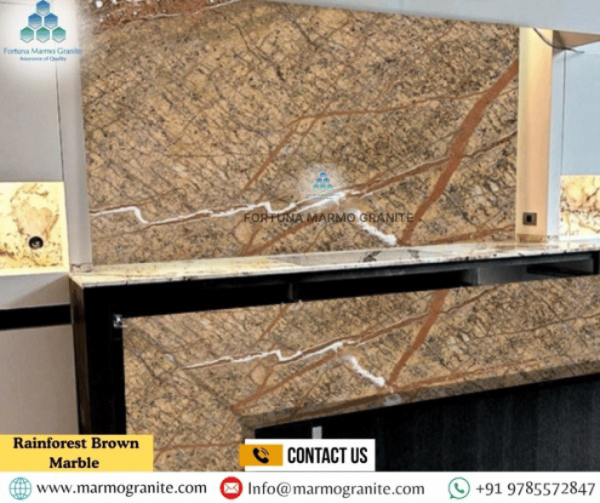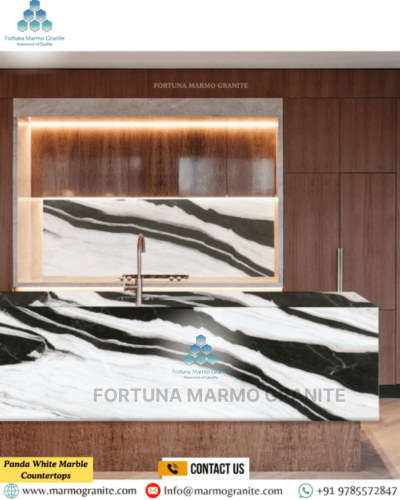What Kind of Rock is Marble? A Guide to This Elegant Countertops Material
Indian Marble Supplier has been revered for centuries for its luxurious appearance, remarkable durability, and versatility. Found in some of the world's most exquisite sculptures, architectural marvels, and elegant countertops, marble continues to be a sought-after natural stone. But what kind of rock is marble, and what makes it so desirable? This guide explores the geological formation of marble, its characteristics, advantages, applications, and why it remains a premier choice for countertops.
Understanding the Geological Identity of Marble
Marble forms through a natural transformation process driven by intense heat and pressure deep within the Earth's crust. It begins as limestone or dolomite rock, which gradually changes over millions of years through metamorphism. During this process, the calcite or dolomite minerals inside the rock recrystallize and develop a dense, interlocking crystalline structure. As a result, the stone gains exceptional strength, durability, and visual appeal. Furthermore, this transformation gives marble its iconic veining and luxurious texture that make it a preferred choice for architecture and design.
Formation Process of Marble
The formation of marble begins deep within the Earth's crust, where limestone or dolomite deposits undergo extreme heat—typically ranging from 600 to 1,200 degrees Fahrenheit—and immense pressure. Under these conditions, the minerals gradually dissolve and then recrystallize into a denser structure. As a result, impurities disappear, and the stone develops the distinctive veined patterns that define marble. Consequently, this natural transformation gives each slab its own unique beauty and timeless character.
Characteristics of Marble
- Unique Veining and Patterns
One of marble's most striking features is its beautiful veining, which varies in color, thickness, and intensity. These veins are formed by mineral impurities, such as clay, silt, sand, and iron oxides, during the metamorphic process.
- Color Variations
Marble comes in a range of colors, from classic white and cream to dramatic shades of green, pink, red, and black. The presence of different minerals determines its hue; for example, iron oxide gives marble a reddish tint, while serpentine minerals contribute to its green coloration.
- Soft and Malleable Nature
Compared to igneous rocks like granite, marble is relatively softer, which makes it easier to cut, carve, and shape. This characteristic has made it a preferred material for sculptures, intricate designs, and detailed architectural elements.
- Porosity and Sensitivity
Being a calcite-rich rock, marble is naturally porous and can be sensitive to acidic substances such as lemon juice, vinegar, and wine. Proper sealing and maintenance help prevent stains and etching.
Why Marble is an Ideal Countertop Material
- Timeless Beauty
Marble countertops bring a sense of luxury and refinement, enhancing the elegance of any kitchen or bathroom. Their natural veining creates a unique pattern, so no two marble slabs look the same.
- Heat Resistance
Marble resists heat exceptionally well, making it perfect for kitchens where you frequently use hot pans and cookware. Nevertheless, using trivets or heat pads helps preserve its pristine surface.
- Durability and Longevity
When properly sealed and maintained, marble countertops can last for decades. Their durability makes them a worthwhile investment, capable of withstanding daily use while retaining their beauty.
- Cool Surface for Baking
For avid bakers and pastry chefs, marble provides the perfect cool surface for rolling out dough, making it a practical and functional choice for kitchen countertops.
Popular Types of Marble for Countertops
- Carrara Marble
Moreover, Carrara marble, originating from Italy, is one of the most popular and affordable varieties. It features soft gray veining against a white or light gray background, giving a classic and elegant look.
- Calacatta Marble
In addition, Often confused with Carrara, Calacatta marble is a premium variety with bolder and more dramatic veining. It typically has a whiter background with gold or gray veining, making it a luxurious choice for high-end interiors.
- Statuario Marble
In contrast, Statuario marble is renowned for its pure white background and striking, bold gray veining. It is often used in luxury applications, including high-end countertops and flooring.
- Emperador Marble
Consequently, This variety, sourced from Spain, has a warm brown background with intricate white and cream veining, offering a rich and earthy aesthetic that pairs well with various design themes.



